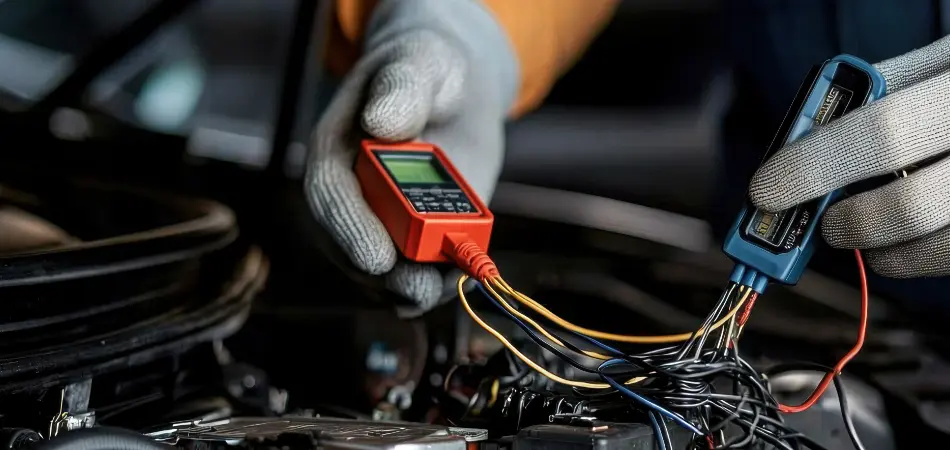Battery Calibration 101: How, Why & When to Do It

Whether you’re a tech enthusiast, a battery nerd, a smartphone user, or a car owner, periodic battery calibration should be on your radar. It can prolong the life of your devices.
It’s an important maintenance practice for most rechargeable devices, including smartphones, laptops, tablets, and electric vehicles (EVs).
In this blog, we’ll cover the basics of lithium-ion battery calibration and explain why it belongs in your maintenance routine.
What is Battery Calibration?
Battery calibration involves resetting the battery’s internal circuitry to provide accurate readings of its charge level.
Lithium-ion batteries have limited charging cycles before they start losing capacity. As a result, they need to be calibrated periodically to maintain their accuracy and prolong their lifespan.
To calibrate, a battery is charged to 100% capacity and then fully discharged until it reaches 0%. The process enables the battery’s internal circuitry to measure its maximum charge and discharge levels accurately.
Why is Battery Calibration Important?
Calibrating your battery enhances its performance and lifespan.
- As they age, lithium-ion batteries can develop a “memory effect” where they think they have less capacity than they do. By calibrating your battery, you reset this memory effect and get accurate readings of its charge level.
- A calibrated battery can perform at maximum capacity, giving you longer use before recharging. It also helps prevent overcharging, which can decrease battery life.
- Does your device shut down unexpectedly when the battery still shows some charge? This is due to an inaccurate reading. Regular calibration can prevent it from happening.
When Should You Calibrate Your Battery?
- If you’ve just purchased a new device, calibrating the battery once a month for the first 3 months will establish accurate readings and prolong the device’s lifespan.
- For older devices, calibration should be done every 3–6 months, depending on use and battery performance.
- You can also download apps that monitor your battery’s health and provide alerts when calibration is needed.
How to Calibrate Your Battery
Calibration ain’t rocket science, but a calibrated battery can make you feel like a master of the universe. Here’s how to do it:
- Charge your device’s battery to capacity.
- Use the device until it shuts off due to low battery.
- Let the device sit for at least 5 hours (preferably overnight).
- Charge the device again without interruption until it reaches 100%.
And that’s it! You’re now a calibration meister fully qualified to write your own blog.
Maintaining Your Battery
Beyond calibration, these are the everyday practices that can maintain your battery’s health and performance.
- Keep your device running at around 20-80% charge.
- Avoid extreme temperatures, which can damage the battery.
- Use the charger and cable that came with your device.
- Enable battery-saver modes when possible.
These habits will extend your battery’s lifespan and reduce the need for calibration. They also promote energy efficiency and sustainability.
When to Replace Your Battery
Despite your best efforts, the time will come to replace your battery. Look for these warning signs.
- Drastically reduced battery life
- Device performance issues related to the battery
- Swelling or physical damage to the battery
If you experience these issues despite regular maintenance, replacing the battery is your best option. It can breathe new life into your device or vehicle, improve performance, and extend useful life.
FAQs: Battery Calibration
Q: How long does battery calibration take?
The process of charging and discharging the battery can take several hours or overnight.
Q: Can I overcharge my device by leaving it plugged in after it reaches 100%?
No, most modern devices are designed to stop charging when they reach full capacity.
Q: Do all batteries need battery calibration?
No. Lithium-ion batteries benefit from the process, while older types like nickel-cadmium may not. Always refer to your device manual for guidelines.
Q: Will calibrating my battery extend its lifespan?
Calibration doesn’t directly extend battery lifespan but ensures accurate charge readings, which can help manage power use.
Q: How often should I calibrate my battery?
A good rule of thumb is every 3 months, but calibrate if you notice symptoms like inaccurate readings or unexpected shutdowns.
Q: Can calibration fix a battery that drains quickly?
Battery calibration can ensure accurate charge readings but won’t fix underlying issues that cause rapid drainage. Further diagnostics or replacement may be needed if your battery drains fast despite being calibrated.
Q: Is it possible to over-calibrate a battery?
Yes, over-calibrating or doing it too frequently can add unnecessary charge cycles, potentially decreasing a battery’s lifespan. Stick to the recommended frequency to avoid over-calibration.
Q: Do all types of batteries need calibration?
No, not all types of batteries require calibration. Lithium-ion batteries benefit from the process, while older types like nickel-cadmium may not. Always refer to your device manual for specific guidelines.
Q: Is there a specific temperature range ideal for calibration?
While calibration isn’t highly sensitive to temperature, room temperature is ideal. Extreme temperatures can affect battery performance, so avoid calibration during temperature extremes.
Q: What should I do if my device doesn’t turn back on after a complete discharge?
Try charging it with its original charger for an extended period. If it still doesn’t power on, seek professional assistance or consult your device manual for troubleshooting steps.
More Articles

0 Comments